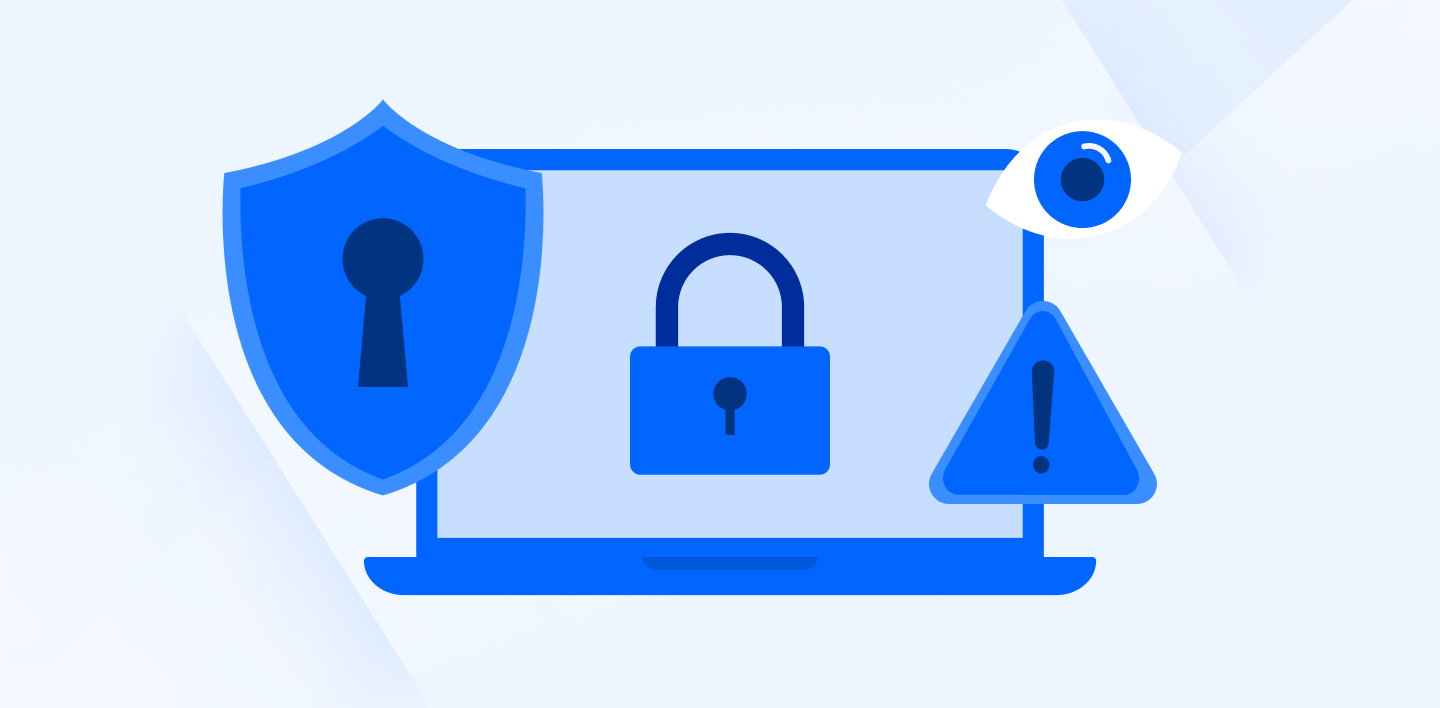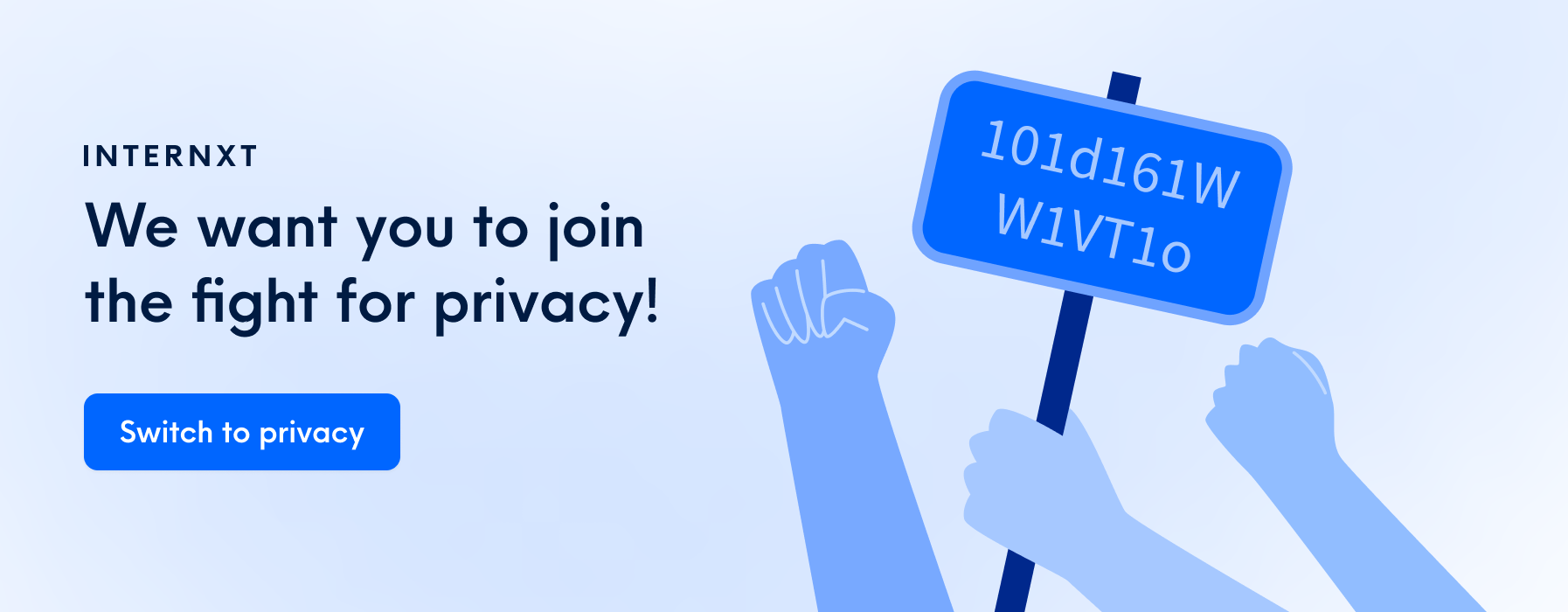5 Security Protocols To Protect Business Data

The rapid growth we see ourselves in regarding technology has caused businesses to change to digital methods to secure data quickly. The time limitations businesses face to secure their data quickly and effectively may cause the security standards to drop, leaving companies wide open to cybercrime.
Cybercrime remains a global problem in 2023, reflected in the rising costs of data breaches and increased attacks on businesses and people’s data. For example, 92% of malware is delivered via email, and phishing attacks account for 36% of data breaches.
As businesses connect to more devices and rapidly adopt the Internet of Things and Artificial Intelligence into their company, ensuring data is encrypted and protected will shape how we handle and defend ourselves against future cyberattacks.
Fortunately, valuable and widely accepted security protocols are available to businesses to ensure the integrity and protection of the data they store, providing a much-needed layer of protection against the current challenges.
What Are Network Security Protocols?
Network security protocols are rules and procedures that protect the confidentiality, integrity, and authenticity of data and communications in an IT network.
Security protocols protect data during transfer, often via cryptography. Cryptography uses advanced algorithms to make the file unreadable to anyone except the intended recipient, ensuring maximum data protection between devices and networks.
Why Are Security Protocols Important?
Without network security, internet functions that rely on transmitting data, such as email or online payments, would be impossible. Having the correct protocols offers the following benefits when the proper security measures are in place:
- Confidentiality: Hackers will target their attacks on data during transfer. Encryption stops these unauthorized attacks as the data is unreadable to everyone except the intended recipient.
- Integrity: When data is sent, it is given a unique set of numbers and letters. If the security system detects and attempts to change this hash value, it will start the correct process to handle the attack as needed.
- Authentication: Websites and servers have certificates — similar to a Digital ID. When two parties communicate, they verify the trustworthiness of each other by verifying this certificate before data is transferred.
- Protection against theft: Secure transmission of files will protect them from hackers or other attacks. When the correct security measures are applied, the secure channels of communication act as a secret and locked tunnel against external threats.
While every company has different needs and levels of security to protect its data, a solid security foundation helps reduce data breaches and data leaks due to human error, helping businesses save money in the long term.
So, if you want to learn more about how security protocols are constantly working to protect your data, scroll down to learn more!
The Key Components of Network Security
Internet security protocols constantly work together to maintain the confidentiality and integrity of your data, allowing this vital information to be accessible at all times when needed.
Each protocol we will look at within this article will have each component integrated to secure data. These are:
- Access control: validates a user’s identity and ensures the correct users are authorized to access and view resources.
- Encryption algorithms: turn regular text into unreadable (encrypted) text to protect against hackers, scammers, etc.
- Message Integrity: Makes sure that no one can tamper or alter any data that is sent between two parties
What Types of Security Protocols Are There to Protect Data?
Several protocols exist to ensure the confidentiality, integrity and authorized accessibility of data over the Internet. Depending on the organization, businesses handling sensitive information will use a combination of these protocols based on their needs. Here are the 5 most common security protocols used to protect documents and data.
Secure Sockets Layer (SSL) and Transport Layer Security (TLS)
Secure sockets layer, or SSL, is the technology that provides secure and private communication between a web browser and server. SSL and TLS use data encryption to keep the information sent between these parties free from attacks.
Without SSL, threat actors can easily read and extract names, addresses, credit card numbers, etc., because the data being sent was not secured via encryption.
The three standard methods to establish if your internet connection is secured via SSL and TLS are:
- Check the URL: if the website uses SSL / TSL it will start with https://. In this case, the s means secure. For example:
- Look for a padlock icon: Most browsers will display a padlock icon to the left of the address bar to show a secure connection and may also change to green for visual reinforcement. You can click on this icon to learn more about network security.
- View the certificate details: If you are still unsure of the connection’s security, you can view the certificate issuer and validity from the padlock icon.
Transport layer security (TLS) has taken over as the standard security protocol for web communication as it is more secure, less vulnerable to security issues, and backward compatible with the older SSL version.
SSL and TLS are crucial in protecting our data on the internet; without them, when we log in to our accounts, make payments, or check our email, our data is left out in the open to hacking and other cyberattacks.

Firewalls
A firewall monitors incoming and outgoing traffic and decides whether to allow or reject access to this traffic based on a predetermined set of rules and specifications.
Firewalls are an essential barrier in blocking harmful traffic for a company; without them it leaves the network vulnerable to various cybercrimes such as data theft or Distributed Denial of Service (DDoS) attacks.
There are different firewalls available depending on the circumstances. Popular types of firewalls include:
- Proxy firewalls: A proxy firewall checks that the website or online service you want to access is safe and secures the data in and out of the network. Proxy firewalls evaluate the safety of the request by analyzing the request against a set of security features, if the request does not meet the criteria, it is blocked.
- Stateful inspection firewalls: These firewalls are used to identify legitimate and malicious traffic based on rules defined by an administrator or other information, such as the source and destination of the IP address.
- Next-Generation Firewalls (NGFW): NGFW combines traditional firewall features with intrusion detection and advanced threat protection. Many businesses use NGFWs to block modern malware and other new cyberattacks because their many applications and features can protect a network from threats.
Firewalls are an essential protective barrier for networks to prevent intrusions and to protect data behind the firewall.
Virtual Private Network (VPN)
A Virtual Private Network provides a secure and encrypted connection over the internet and can be used alongside security protocols to ensure confidential data transmission. VPNs are especially useful during a period when the popularity of remote work continues to grow.
Public or home WIFI are popular targets for cybercriminals, as public WiFi hotspots are generally not encrypted, meaning data sent through WiFi from a coffee shop is vulnerable to attacks.
Once a VPN server is initiated, it creates a secure tunnel for the data to move through. Again, this data is encrypted and is unreadable to outsiders trying to see what information a user is sending.
Therefore, companies should encourage workers in and outside the office to use a VPN whenever possible and to take measures to secure their Wi-Fi router and access points for larger businesses to protect their business data from cyber threats.
Simple Mail Transfer Protocol Secure (SMTPS)
It may sound wordy and complicated, but a Simple Mail Transfer Protocol is a rule that protects your emails when you send them. It uses the SSL and TLS protocols mentioned before to encrypt the contents of your message and ensures that only the intended recipient can view its contents.
Without secure email protocols in place, businesses or individuals are left open to man-in-the-middle attacks, spam, phishing, and ransomware. Fortunately, secure email services are available that are easy to use and automatically encrypt your messages so you can send them.

Kerberos
Kerberos is an open-source project that authenticates requests from two trusted hosts on an untrusted network, like the Internet. Kerberos has been around since the 1980s and was developed by exceptionally clever people at the Massachusetts Institute of Technology (MIT). Now it is the default security protocol for Microsoft Windows.
Kerberos is an authentication protocol so only authorized users can access specific resources securely. If you want to access a file server, for example, then
- your device sends a request,
- the system verifies your ID,
- you are issued with a Ticket Granting Ticket (TGT),
- Your device uses the ticker to access the requested file.
Kerberos is a trusted security protocol for large and small-scale companies and a valuable authentication tool in an age where attacks constantly threaten companies.
How to Implement Effective Security Protocols for Your Business
Even with the best security protocols, they aren’t worth anything to a business unless employees know how to practice vigilance when dealing with sensitive data. Unfortunately, human error is the primary cause of data leaks for companies.
However, building a workplace environment based on cybersecurity does not have to be costly, and your employees don’t have to become qualified experts to prevent cybersecurity incidents.
Security protocols for your employees don’t require long-winded abbreviations or names from Greek mythology, just a familiarity with the basics of adequate security in the workplace to prevent major incidents from happening. For example, keeping a list of cybersecurity practices in the office is an effective way to spread good cybersecurity routines in the workplace.
There are many layers to cybersecurity, but at the most basic level, effective security protocols that need to be established can be seen below.
Good Password Management
Encourage employees to use long, complex, and unique passwords that they change regularly. Most importantly, ensure employees know how to create passwords effectively, such as avoiding personal information that people may overhear in the office, birthdays, pet names, etc.
Safe Email Practices
As cybercriminals typically send phishing, social engineering, and malware attacks via email, employees must be aware of the dangers of email attacks. New employees are especially at risk as they are initially unfamiliar with the cybersecurity practices of a new company.
To ensure safe communication over a network, use an encrypted email whenever possible, verify the sender’s details, and only send data to the necessary parties to avoid oversharing sensitive information.
If an employee receives unprompted messages urging them to click on a link or download a file, encourage them to report the email to the necessary department first, and to never share any personal or sensitive information via email without the proper clearance to do so first.
Regular Backups
Data loss may happen for several reasons outside company control, such as theft, broken or lost devices, etc. Fortunately, technology is rapidly moving away from USBs or other physical drives and choosing a more reliable and secure cloud storage solution.
Cloud storage security measures ensure that employees can access their files from anywhere at any time, and should anything happen to their device, the files are regularly backed up and synced in the cloud, meaning there is less chance of a huge data loss affecting the worker or the company.
Choosing from the many cloud storage backup solutions will differ from person to person. Still, it's worth noting that Internxt Drive is the first cloud storage with post-quantum encryption and is an open source, private cloud provider that also offers a VPN and Antivirus with its paid plans, which start at €2/month.

Security Protocols: An Effective Solution to Help Protect Data
To keep up with the rapid developments of technology and the persistent threats of cybercriminals, businesses, employees, and anyone who values their online privacy and security must consider which security protocols are the best fit to keep their data protected.
While no security protocol is 100% secure, knowing the importance of cybersecurity will help us adjust our cybersecurity needs accordingly and continue to thrive in today's technology-centric world.

